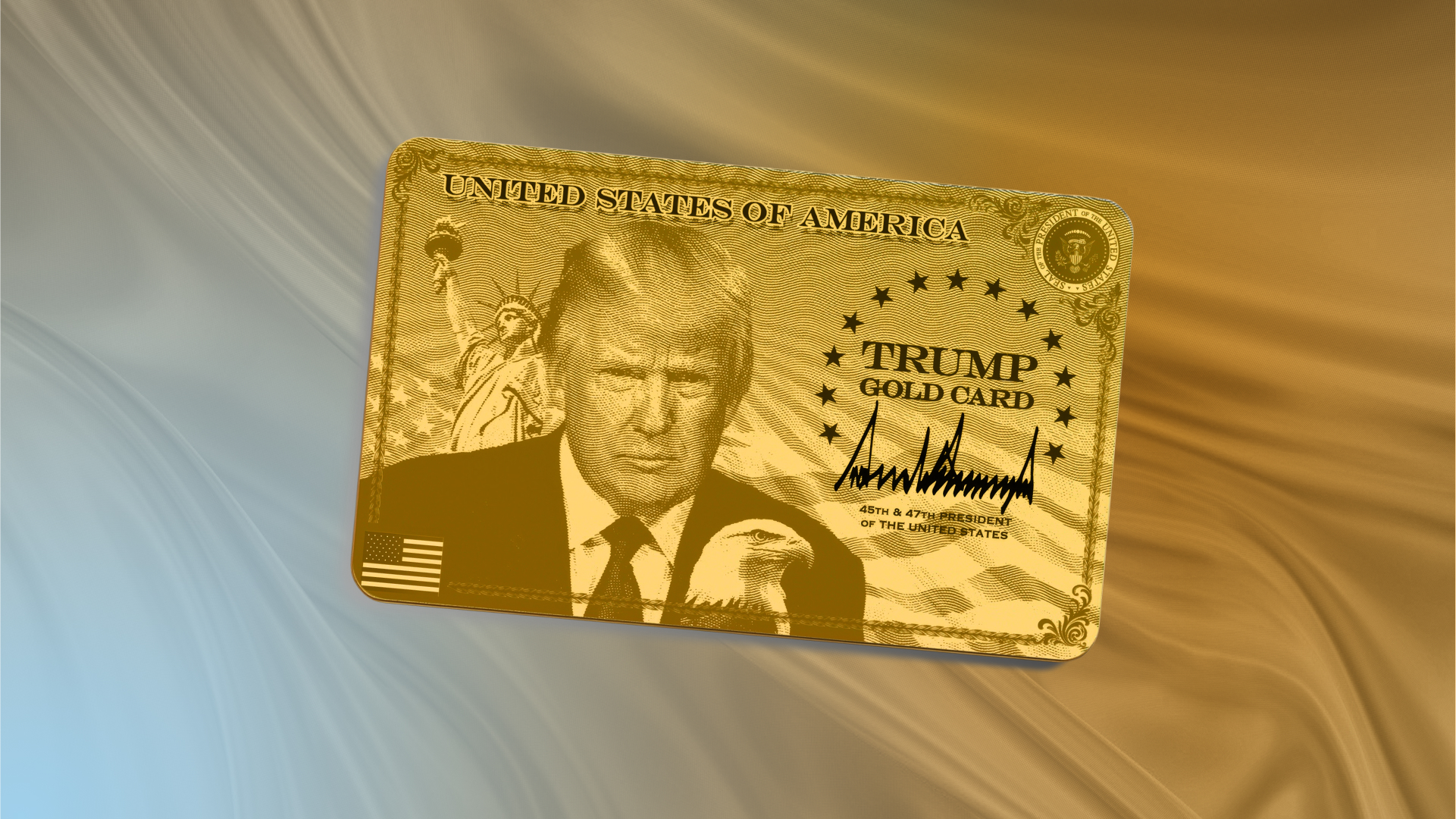
.svg)
President Donald Trump signed an executive order on Friday launching the “Trump Gold Card” visa, which grants permanent U.S. residency (a green card) and a path to citizenship in exchange for a $1 million investment — an 80% cut from the originally proposed $5 million investment after lukewarm initial feedback from the global investment community.
The administration has said that the Gold Card program is ultimately intended to replace the EB-1 and EB-2 employment-based visas and generate revenue for the U.S. Treasury, with the stated goal of helping to reduce the federal debt.
Key Facts
- Gold Card ($1 million): The standard Gold Card is now open for applications on the official government portal trumpcard.gov, offering a green card and a path to citizenship for a $1 million contribution.
- Corporate Gold Card ($2 million): A “Corporate Gold Card” is also available to companies for $2 million, which allows companies to fast-track U.S. residency for an employee and transfer that benefit to another worker for a fee, along with a required annual maintenance charge.
- Platinum Card ($5 million): Individuals can join a waiting list for the newly proposed $5 million “Platinum Card,” which grants up to 270 days in the U.S. annually without triggering U.S. taxes on non-U.S. income, pending congressional approval.
- Employment-Based Visas: Despite earlier claims by Commerce Secretary Howard Lutnick that the Gold Card would replace the EB-5 investor visa, the administration now signals it may replace EB-1 and EB-2 visas instead. Currently, the EB-1, EB-2, and EB-5 visa pathways remain available.
Key Implications
A Shift from Job Creation to Wealth-Based Immigration
Unlike EB-5, which mandates an investment in a commercial project that creates or preserves 10 U.S. jobs, the Gold Card removes any direct job-creation requirement; instead, candidates simply contribute $1 million directly to the government in exchange for permanent residency (after security vetting). This shifts investor immigration toward wealth alone, with no guaranteed employment benefits for U.S. workers.
Skilled Talent Gaps and Recruitment
Employers should note that the Gold Card program is geared toward ultra-high-net-worth investors, not skilled talent. The program provides no direct pathway for companies seeking to recruit specialized professionals who do not meet these wealth criteria. Most global talent will still require traditional work visas (H-1B, O-1, etc.), which remain subject to new fees and regulatory changes.
Global Talent Pool and Competitiveness
This policy shift could influence how the U.S. is seen globally. Countries like Canada, Australia, and the U.K. actively court skilled workers with efficient immigration policies, while the U.S. is prioritizing wealth-based entry. If investor visas take precedence over employment visas, the U.S. risks losing out on highly educated professionals seeking faster, less costly options elsewhere.
Legal and Policy Caveats
The Gold Card visa program is run by the Commerce Department, not U.S. Citizenship and Immigration Services (USCIS). Experts caution that full implementation will require new Congressional authorization, especially for tax exemptions and expanded benefits.
Actionable Insights for Employers
Stay Informed and Advocate
Closely monitor changes in immigration policy and assess how they might affect your staffing strategies — whether through shifts in the availability of skilled talent or changes in recruitment channels. In practical terms, this means regularly reviewing how emerging policies could alter your hiring needs, training plans, or even long-term business projections. To help shape favorable policies, consider joining industry coalitions or business associations such as the U.S. Chamber of Commerce, the National Association of Manufacturers, or sector-specific groups like TechNet. These organizations advocate for immigration reforms designed to secure a steady pipeline of skilled workers.
Expand Global Recruitment Strategies
Given U.S. immigration uncertainties, companies may consider diversifying hiring strategies by establishing satellite offices in more immigration-friendly countries. Promoting a global mobility program helps maintain access to international talent, even as U.S. policies change.
Take Advantage of Traditional Talent Visas
If the Gold Card is unattainable or does not meet your needs, traditional visas remain available. While there is considerable uncertainty surrounding the future of the H-1B visa program following the announcement of a new $100,000 fee, “Project Firewall,” and a proposed replacement of the lottery system, other employment-based visa options can help businesses secure top foreign talent, including:
- The O-1 visa
- The J-1 visa (Early-Career STEM Research Initiative)
- The EB-1A visa
- The EB-2 National Interest Waiver (NIW) visa
Looking Ahead
President Trump’s “Gold Card” visa represents a major shift away from traditional employment-based immigration. While it may appeal to ultra-wealthy investors, it does little to address ongoing talent shortages in key industries. For now, U.S. employers should monitor immigration policy changes and refine their global recruitment strategies to stay competitive.
At Boundless, we’ve seen firsthand how pathways like the O-1, EB-1A, and EB-2 NIW continue to help businesses secure the talent they need. As policies shift, these options remain an important foundation for companies looking to plan with confidence.
.png)
.png)
.png)





%20(1).jpeg)

.jpg)

.svg)
.avif)